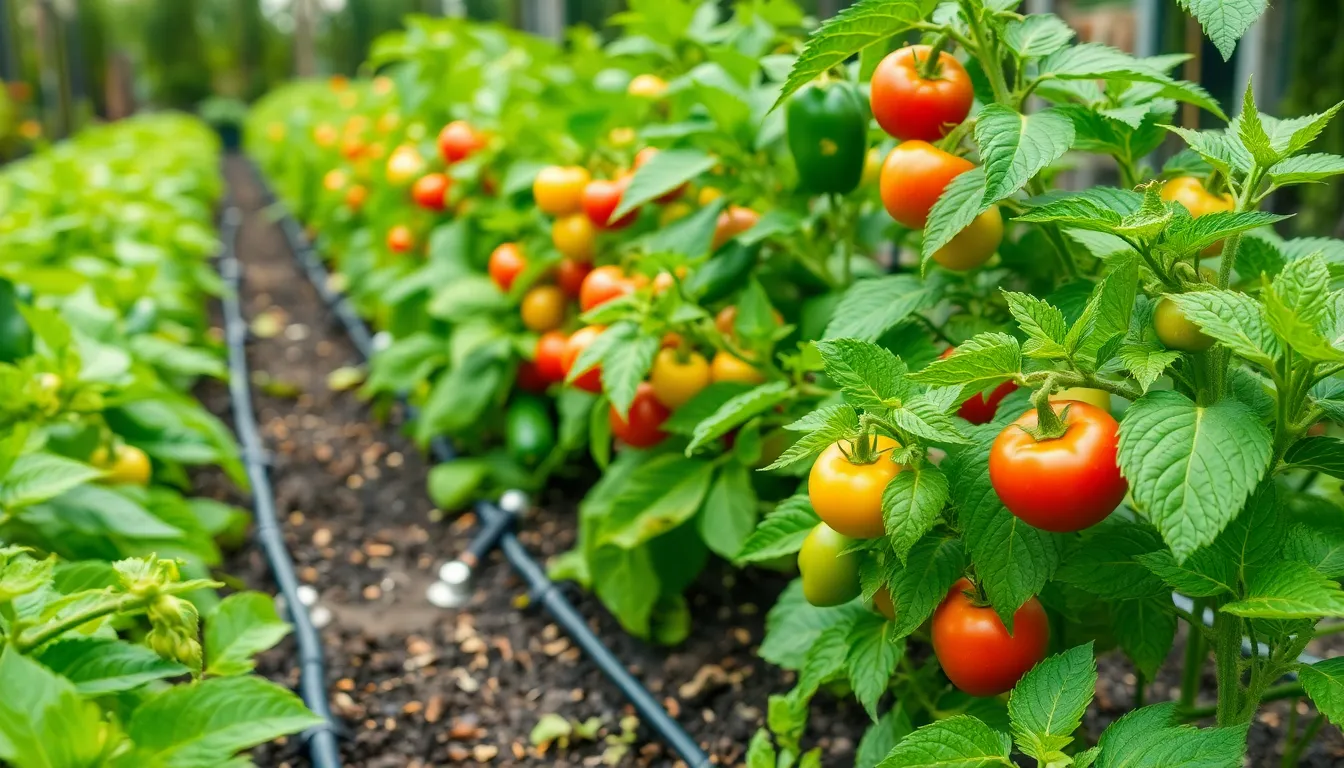Gardening is an art that thrives on precision, patience, and a touch of innovation. Whether you’re just dipping your toes into the world of soil and seeds or you’ve been nurturing your garden for years, understanding how water impacts plant health is crucial. Enter the drip irrigation system, a modern marvel that offers a tailored approach to watering that can transform your garden’s vitality. This system doesn’t just water your plants; it nurtures them with precision, conserving resources and enhancing growth.
For beginners, a drip irrigation system might sound like a luxury reserved for seasoned gardeners, but it’s surprisingly accessible and easy to install. Imagine the delight of setting up a system that delivers water directly to the roots, ensuring your plants receive consistent moisture without the worry of over-watering. Experienced gardeners will appreciate the efficiency and control this method offers, allowing for a more sustainable approach to water usage. Plus, you’ll find yourself with more time to enjoy the fruits of your labor rather than spending hours with a hose in hand.
In this article, we’ll explore the tangible benefits of installing a drip irrigation system, from conserving water to boosting plant health and reducing weeds. You’ll learn how to set up your own system, whether your garden is a compact balcony oasis or a sprawling backyard sanctuary. We’ll also delve into maintenance tips and tricks to ensure your system runs smoothly, season after season. By the end, you’ll have all the knowledge you need to embrace this innovative watering technique and take your gardening to new heights.
Maximize Water Efficiency

Drip irrigation systems are highly efficient because they deliver water directly to the plant’s root zone. This minimizes evaporation and ensures that plants receive the exact amount of water they need without wastage.
By using a drip irrigation system, gardeners can significantly reduce their water usage. This system is particularly effective in areas with limited rainfall or during drought conditions, helping to sustain a healthy garden.
To maximize water efficiency, ensure that your drip irrigation system is properly set up and maintained. Regularly check for leaks or blockages in the tubing, as these can lead to unnecessary water loss.
Adjust the system according to the specific needs of your plants and the season. For instance, succulents require less frequent watering compared to vegetables, so tailor the watering schedule accordingly.
Consider pairing your drip irrigation system with a timer to automate watering schedules. This helps to maintain consistent watering patterns, which is crucial for plant health and growth.
As an advanced tip, use mulch around your plants to further reduce evaporation and retain soil moisture. Mulching not only conserves water but also improves soil health by adding organic matter.
Enhance Plant Health
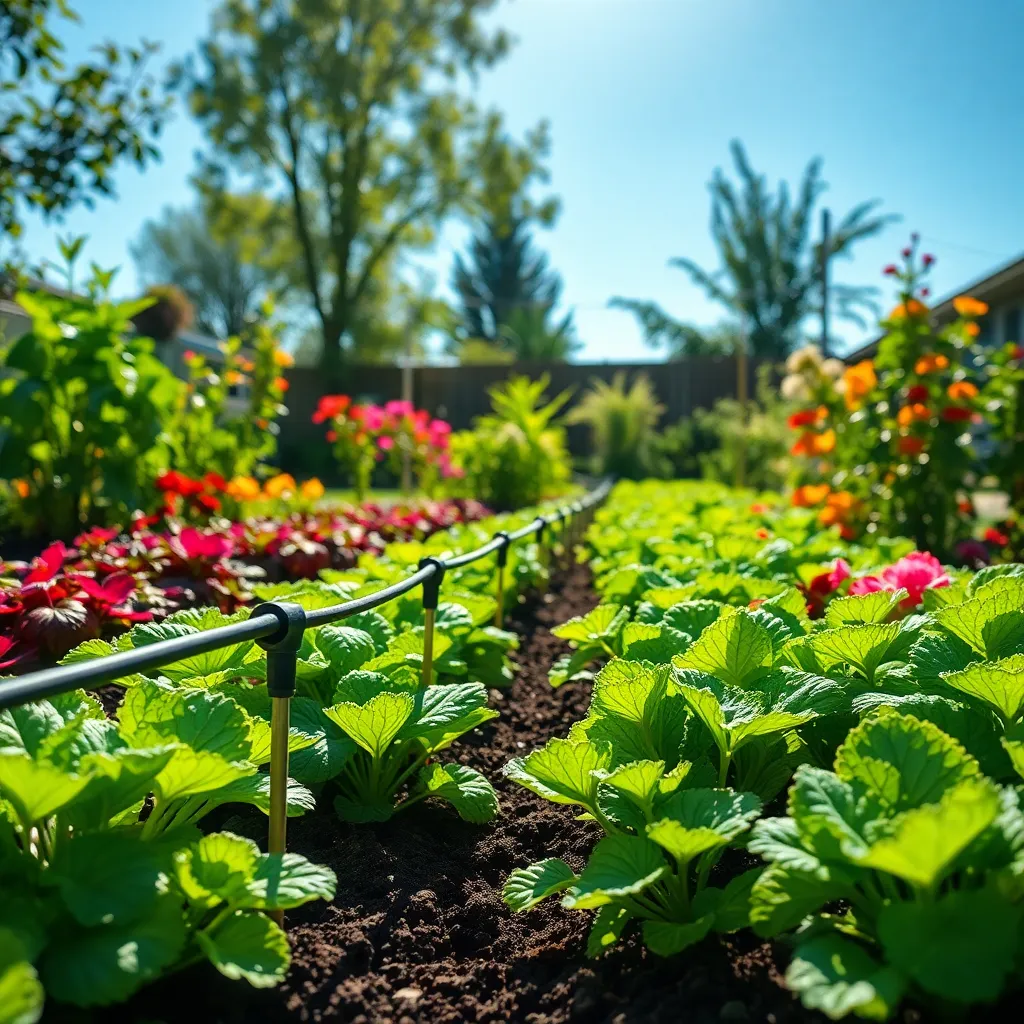
Installing a drip irrigation system can significantly enhance the health of your plants by providing consistent moisture levels. This method ensures that water directly reaches the root zone, minimizing evaporation and promoting deeper root growth.
One of the primary benefits is the reduction of waterborne plant diseases. By keeping foliage dry, drip irrigation helps to prevent the spread of fungal infections, which are common in overwatered environments.
For beginner gardeners, it’s crucial to understand that a drip system allows for precise water delivery, which is essential for sensitive plants. Adjusting the flow rate according to the plant type and soil condition can lead to optimal growth and vitality.
Experienced gardeners can benefit from using advanced timers and moisture sensors to fine-tune their irrigation schedules. This approach not only conserves water but also ensures that plants receive adequate hydration during critical growth periods.
To further enhance plant health, consider using organic mulch around the base of your plants to retain soil moisture. Mulching in combination with drip irrigation can create a perfect microenvironment that supports robust plant development.
For best results, regularly inspect your drip system for clogs or leaks, as these can disrupt the water distribution and affect plant health. Keeping your system well-maintained ensures consistent performance and maximizes the benefits to your garden.
Reduce Weed Growth
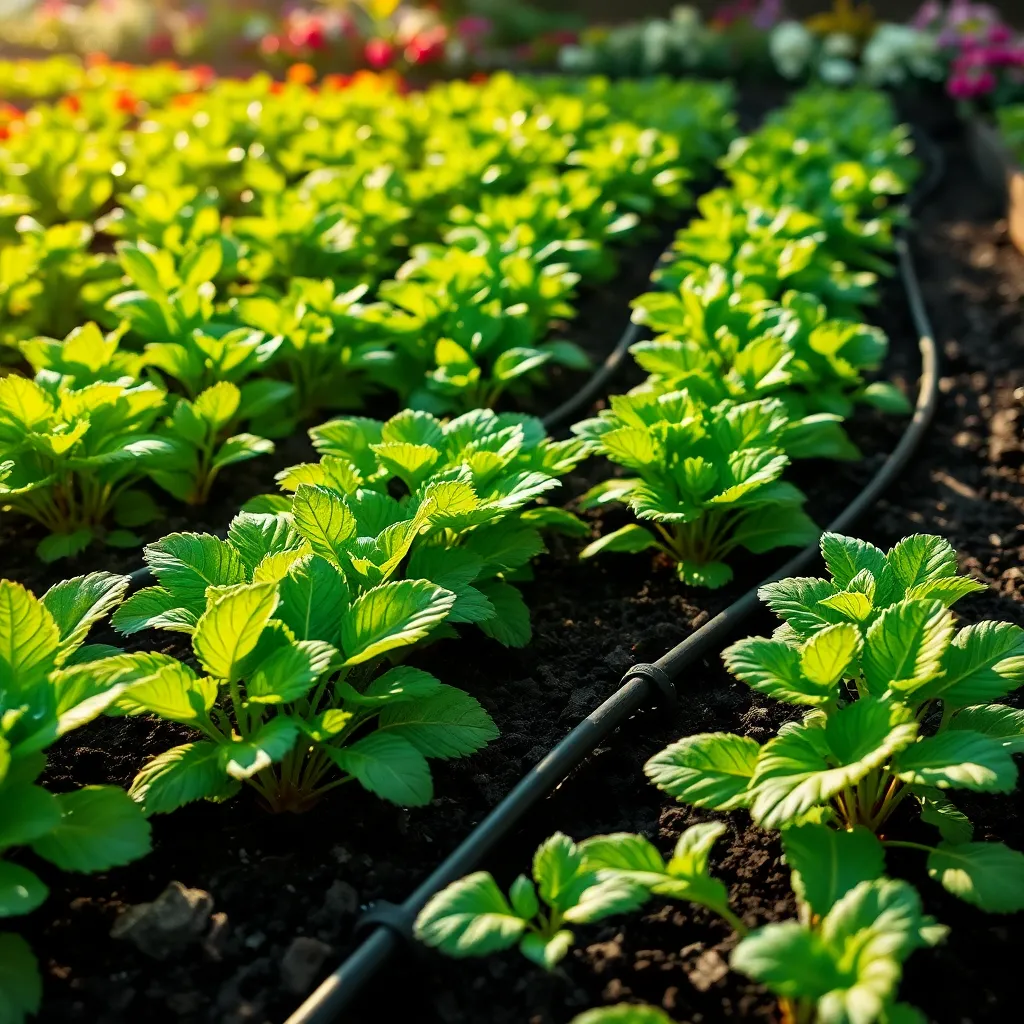
One of the significant benefits of installing a drip irrigation system is its ability to reduce weed growth. By delivering water directly to the base of your plants, drip systems help ensure that only your desired plants are being watered. This targeted watering method minimizes moisture in surrounding areas, which is where weeds typically thrive. As a result, fewer weeds will germinate, making your garden easier to manage.
Precise water delivery means that you can also control the frequency and duration of irrigation with more accuracy. This control allows you to tailor the watering schedule to your specific plant needs, further reducing unnecessary moisture that encourages weed growth. For beginners, setting the system to water early in the morning can maximize absorption and minimize evaporation.
For advanced gardeners, integrating a timer with your drip system can automate this process and maintain consistency in water delivery. This is particularly beneficial in regions with variable weather conditions, as consistent watering can be maintained without manual intervention. Furthermore, using mulch in combination with drip irrigation can enhance weed suppression by blocking sunlight from reaching the soil surface.
To maximize the effectiveness of your drip irrigation system, ensure proper installation and maintenance. Regularly inspect emitters to prevent clogs that could inadvertently promote uneven watering. Consider using a filter in your system to prevent debris from entering the lines, which prolongs the life of your setup and maintains optimal plant hydration.
Save Time and Effort
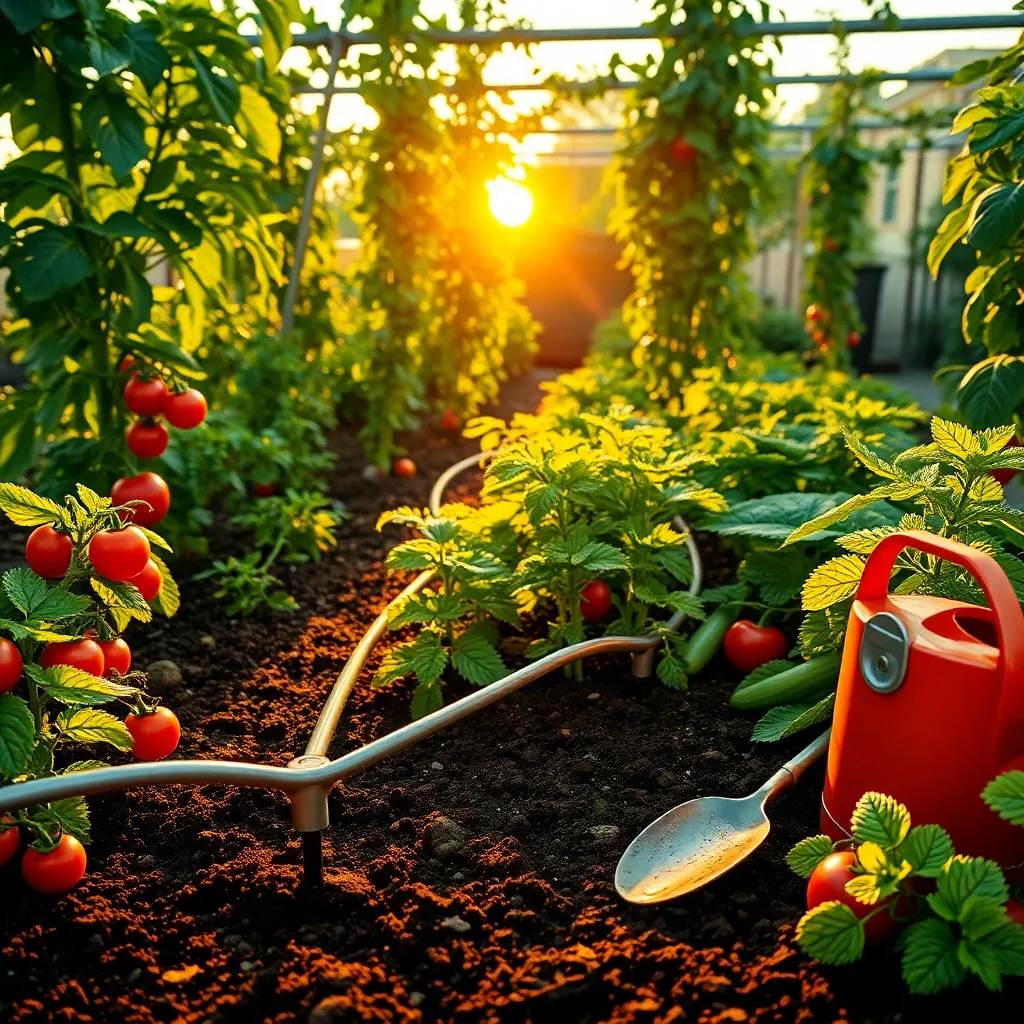
One of the greatest advantages of a drip irrigation system is the significant time savings it offers. Unlike traditional watering methods, which require constant attention and manual effort, drip systems can be set to water your plants automatically based on a schedule.
For beginners, this means less time managing hoses and more time enjoying your garden. By automating the watering process, you can focus on other important gardening tasks such as pruning or harvesting.
Advanced gardeners will appreciate the precision a drip system provides, allowing for customizable watering schedules tailored to different plant needs. This system ensures that plants receive the exact amount of water required, which is especially beneficial for species with specific moisture requirements.
To maximize efficiency, consider investing in a timer that can be programmed to water during the early morning or late evening, minimizing evaporation. This is particularly advantageous for gardeners in hot climates, where water conservation is crucial.
Additionally, drip irrigation minimizes the risk of overwatering, which can be detrimental to plant health. By delivering water directly to the root zone, you ensure that each plant gets precisely what it needs to thrive, promoting stronger growth and healthier plants.
Customize for Diverse Needs
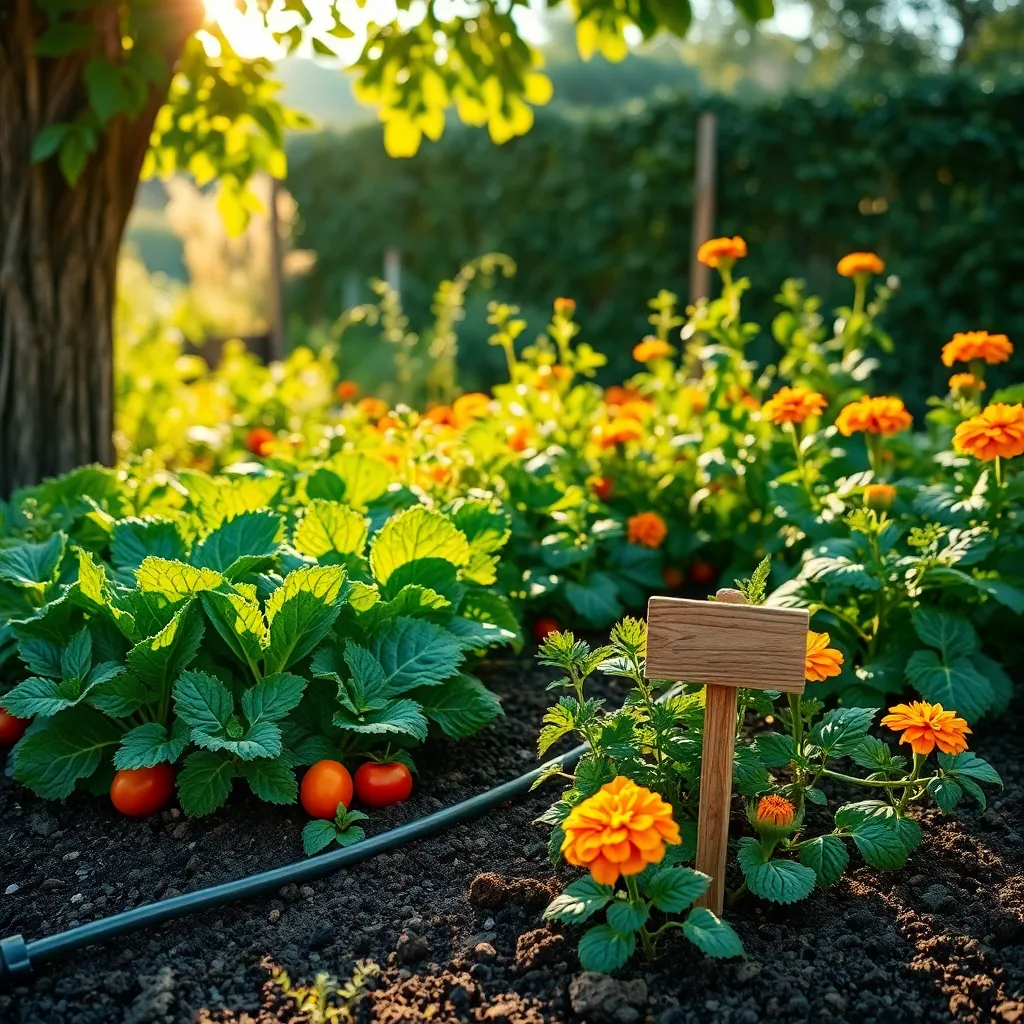
Drip irrigation systems offer the flexibility to meet the diverse needs of different plants in your garden. By adjusting the flow rate of emitters, you can ensure that each plant receives the exact amount of water it needs, preventing both under and over-watering.
It’s essential to consider the specific water requirements of various plants when setting up your system. For instance, succulents and cacti, which prefer drier conditions, will benefit from emitters providing less frequent irrigation compared to moisture-loving plants like tomatoes or cucumbers.
For gardeners with a mix of plant types, installing a customizable drip irrigation system can be a game-changer. Use adjustable emitters or inline drip tubing with different flow rates to cater to the unique needs of each plant species in your garden.
Ensure that the soil type in your garden matches the water delivery method. Sandy soils, for example, drain quickly and may require more frequent but shorter watering sessions, while clay soils retain moisture longer and could benefit from less frequent watering.
Advanced gardeners can further enhance their system by incorporating soil moisture sensors. These tools help to fine-tune watering schedules based on real-time soil conditions, ensuring that plants receive optimal hydration without waste.
Conclusion: Growing Success with These Plants
In exploring the ‘Benefits of Installing a Drip Irrigation System,’ we’ve delved into the transformative impact this method can have on your relationship with the environment and your garden. First, we discussed how drip irrigation fosters efficient water usage, nurturing sustainability. Next, we highlighted its role in promoting plant health through consistent moisture delivery, akin to providing steady support in relationships. Third, we examined its cost-effectiveness, paralleling wise investment in relationship growth. Fourth, the convenience of this system was likened to the ease that comes with understanding and communication. Lastly, we looked at its adaptability, reflecting the importance of flexibility in nurturing connections.
As your actionable next step, consider evaluating your current gardening practices and how a drip irrigation system could improve them, just as you would assess and enhance your relationships. Bookmark this article to revisit these insights and strategies, ensuring they are at your fingertips whenever you need a gentle reminder or guidance.
Looking ahead, remember that just as nurturing a garden leads to flourishing blooms, investing time and effort into your relationships promises a harvest of joy and connection. You have the power to cultivate both with care and intention.

